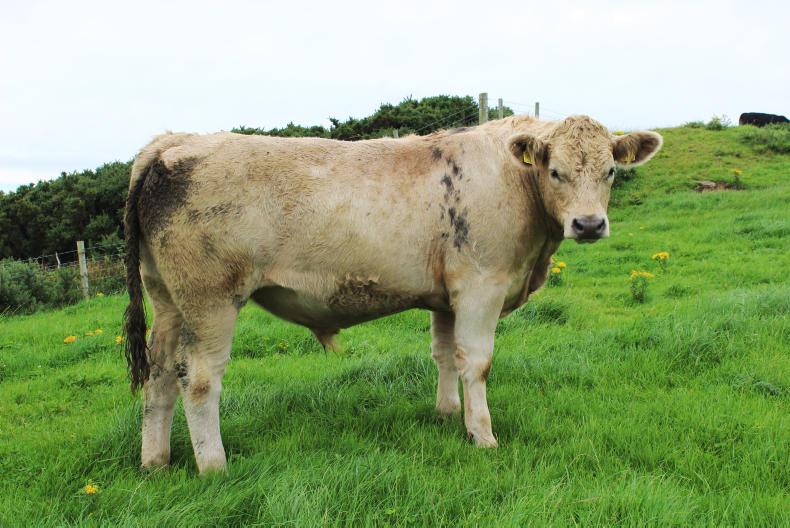Finishing cattle are coming fit for slaughter, so you should be paying close attention to fat covers. Once cattle are properly covered, they should be marketed.
Finishing cattle are coming fit for slaughter, so you should be paying close attention to fat covers.
Once cattle are properly covered, they should be marketed.
There is little benefit in holding cattle to reach heavier carcase weights once they reach an acceptable fat cover. The reason being is that the animal will be converting a higher percentage of concentrate feed into fat, instead of lean muscle.
It takes six times more energy to produce 1kg of fat than 1kg of lean muscle. Therefore, the animal is less efficient at food conversion.
Cost effective
For instance, a bull with a daily gain of 1.75kg/day during the intensive finishing period will be gaining 1.05kg/day of carcase weight, worth €4.20/day at a beef price of €4/kg.
Assuming the bull is eating 12kg/day of concentrates (€250/t) and 3kg/day of straw (15c/kg), the animal has a daily feed cost of €3.30, leaving a margin over feed of 90c/day.
But once the animal has reached target slaughter weight and fat score, weight gain will fall off quickly. Holding the animal to increase carcase weight becomes economical.
Assuming weight gain falls to 1.25kg/day, the bull will have a daily carcase gain of 0.75kg/day, worth €3/day at a beef price of €4/kg. This means the animal is losing 30c/day on feeding costs alone. Labour and fixed costs still have to be applied.
Likewise, killing cattle that are not at a suitable fat score can reduce killout by as much as 3% to 5%. On a 400kg carcase, this can reduce the animal’s sale value by as much as €80.

Cattle should be sold once they reach target slaughter weight and fat cover.
Feeding guide
Finishing cattle need energy and starch to achieve adequate fat cover. Barley and maize meal are ideal ingredients for fattening cattle.
Maize is higher in starch and energy and is slowly digested, reducing the risk of acidosis, but limit to 40% of the diet.
Finishing rations should be 0.95 UFV or better and have a protein of 12% to 13%.
Continental type heifers will start to go fat after 60 to 70 days of intensive feeding. Traditional breeds will go fat at an earlier stage.
Continental steers will go fat after 80 to 100 days of intensive feeding and again, breed type will influence how quickly they are fleshed.
Gauging fat cover
Seasoned finishers know how to gauge the fat cover on cattle just by look. But for those who are less experienced at finishing cattle, the main areas to assess for fat cover include:
1. Ribs and shoulders – when handled, the rib cage and shoulder should be difficult to feel without applying excessive pressure. The flesh should feel soft to touch if there is a good layer of fat present.
2. Loin – Cup your hand and apply pressure to the loin and move toward the hindquarter. The hand should move smoothly along the loin and again you should be able to feel fat below the skin.
3. Tail head, pin and hook bones – Bones should feel rounded and dull to touch, rather than sharp. They should also be less prominent. The tailhead should appear sunken and sit evenly with the pin bones.
4. Flank and brisket – the flank is the area between the top of the hind leg and the belly. When cattle are finished, there will be a lot of fat cover in this area. The brisket is the chest area between the front legs and gives a good indication of fat cover.
5. Cod – the cod is the area around the scrotum in steers and bulls. It is usually one of the last areas to deposit fat. If the cod area has fat present, the animal has a good fat cover and should be marketed.
Read more
Fodder issues: what you can do to address the problem
Meal might be better value than poor forage
Tullamore Farm: BDGP tagging, dosing and a bull with a broken leg





SHARING OPTIONS: